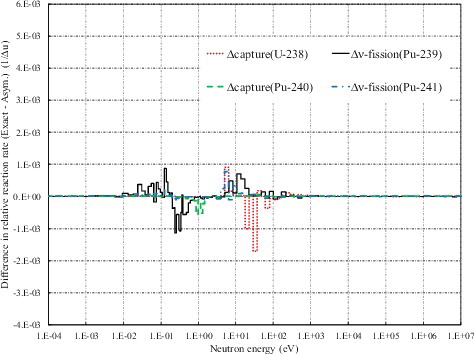Figures & data
Figure 1. Neutron elastic scattering and capture cross sections of 238U in 1–103 eV [Citation13]. The figures attached to the major resonance peaks are neutron energies of the peaks.
![Figure 1. Neutron elastic scattering and capture cross sections of 238U in 1–103 eV [Citation13]. The figures attached to the major resonance peaks are neutron energies of the peaks.](/cms/asset/5db76801-41c4-476f-864f-af0a1f137d05/tnst_a_1136903_f0001_oc.jpg)
Figure 2. Neutron elastic scattering, fission, and capture cross sections of 235U in 1–103 eV [Citation13].
![Figure 2. Neutron elastic scattering, fission, and capture cross sections of 235U in 1–103 eV [Citation13].](/cms/asset/ced69a9a-e01f-4125-9ad7-94071041b3d0/tnst_a_1136903_f0002_oc.jpg)
Figure 3. Neutron elastic scattering, fission, and capture cross sections of 239Pu in 1–103 eV [Citation13].
![Figure 3. Neutron elastic scattering, fission, and capture cross sections of 239Pu in 1–103 eV [Citation13].](/cms/asset/cdba6bdb-2c2d-4c3f-8407-3dd001d55df0/tnst_a_1136903_f0003_oc.jpg)
Table 1. List of analyzed mockup assemblies [Citation12].
Table 2. kinf's of the assemblies calculated by using MVP-2 coupled with the asymptotic and exact models for the base conditions [Citation12].
Table 3. kinf's of the assemblies calculated by using MVP-2 coupled with the asymptotic and exact models for the high-temperature condition [Citation12].
Figure 4. Differences in groupwise reaction rates between the exact and asymptotic model calculations for the PWR 17 × 17 (4.8) UO2 assembly at the fuel temperature of 1500 ℃.
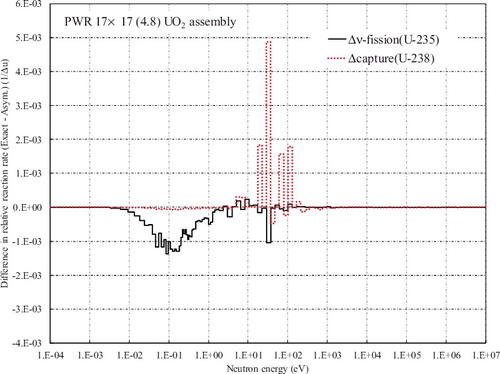
Figure 5. Differences in groupwise reaction rates between the exact and asymptotic model calculations for the PWR 17 × 17 (MOX) assembly at the fuel temperature of 1500 ℃.
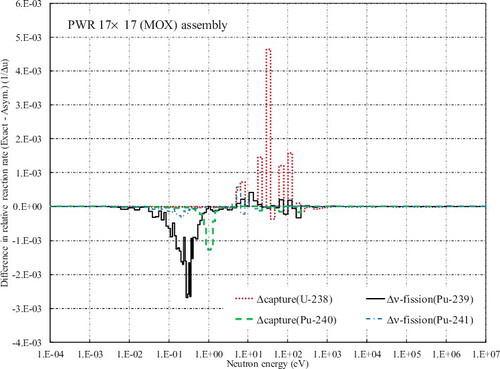
Figure 6. Differences in groupwise reaction rates of the calculations with the asymptotic model between 1500 and 284 ℃ of the pellet temperatures for the PWR 17 × 17 (4.8) UO2 assembly.

Figure 7. Differences in groupwise reaction rates of the calculations with the asymptotic model between 1500 and 284 ℃ of the pellet temperatures for the PWR 17 × 17 (MOX) assembly.
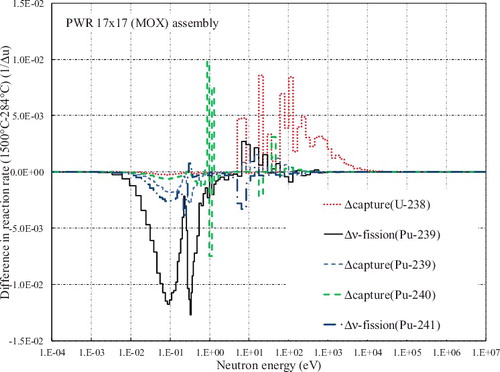
Figure 8. Differences in kinf's between the asymptotic and exact models for the base- and high-temperature conditions.
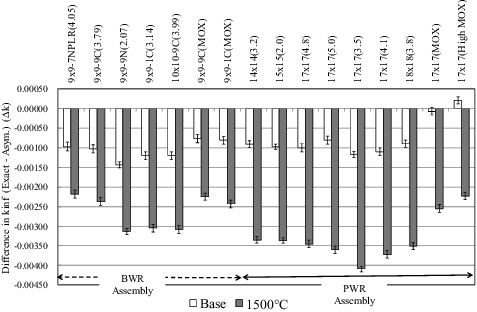
Table 4. Doppler reactivity (base to 1500 ℃) of the assemblies calculated by using MVP-2 coupled with the asymptotic and exact models [Citation12].
Figure 9. Doppler reactivity (base to 1500 ℃) with the asymptotic and exact models [Citation12]. The base temperatures are 520 ℃ for the BWR assemblies and 284 ℃ for the PWR assemblies.
![Figure 9. Doppler reactivity (base to 1500 ℃) with the asymptotic and exact models [Citation12]. The base temperatures are 520 ℃ for the BWR assemblies and 284 ℃ for the PWR assemblies.](/cms/asset/2fc81d70-7e50-4292-bd2b-170655322bab/tnst_a_1136903_f0009_b.gif)
Figure 10. Relative differences in Doppler reactivity (base to 1500 ℃) between the calculations of the asymptotic and exact models [Citation12].
![Figure 10. Relative differences in Doppler reactivity (base to 1500 ℃) between the calculations of the asymptotic and exact models [Citation12].](/cms/asset/d936715b-0a85-45c1-939b-b022d94c775c/tnst_a_1136903_f0010_b.gif)
Figure 11. Comparison of the effects on Doppler reactivity of the exact model between applying it only to 238U and that to all nuclides.
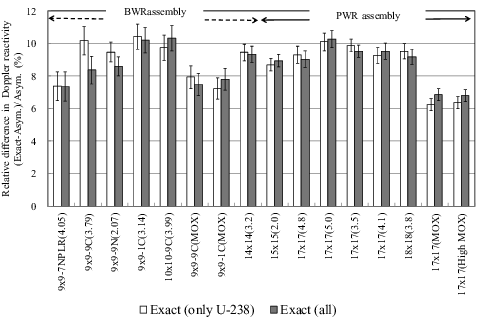
Figure 12. Differences in kinf's between the asymptotic and exact models (all nuclides except 238U) for the base- and high-temperature conditions.

Figure 13. Comparison of the effects on Doppler reactivity of the exact model between applying to all nuclides except 238U and that to all nuclides.

Figure 14. Differences in groupwise reaction rates between the exact and asymptotic model calculations for the PWR 17 × 17 (4.8) UO2 assembly at the fuel temperature of 1500 ℃, where the exact model was applied to all nuclides except 238U.
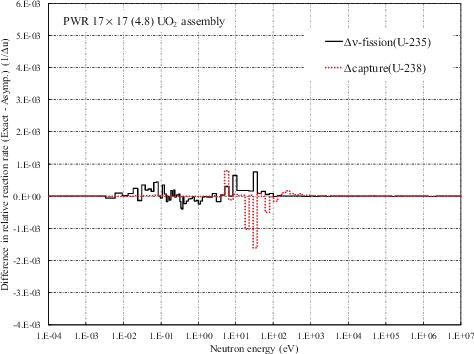
Figure 15. Differences in groupwise reaction rates between the exact and asymptotic model calculations for the PWR 17 × 17 (MOX) assembly at the fuel temperature of 1500 ℃, where the exact model was applied to all nuclides except 238U.
